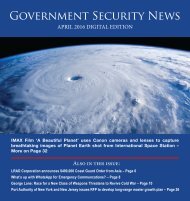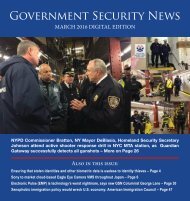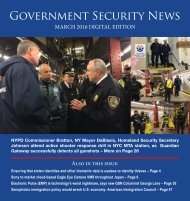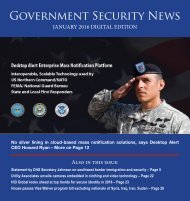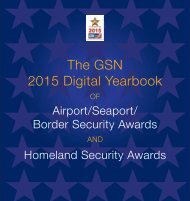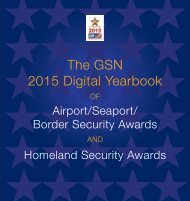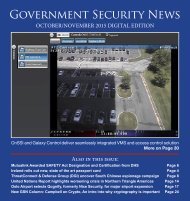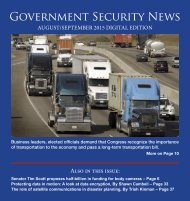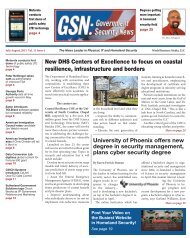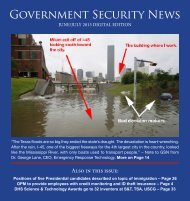GSN Aug/Sept Digital Edition
- No tags were found...
You also want an ePaper? Increase the reach of your titles
YUMPU automatically turns print PDFs into web optimized ePapers that Google loves.
Disaster Preparedness and Emergency ResponseThe Role of Satellite Communications inDisaster Response PlanningThe 2015 Atlantic hurricaneseason officiallykicked off on June 1 andremains in effect untilNovember 30. Is yourorganization prepared?Is anyone ever fullyprepared when naturaldisasters strike? One ofthe biggest challengesin planning for disaster responseis predicting the full extent of thedamage in advance.Every disaster response planshould include a comprehensive,well tested communications plan.Having a means to call for help andcoordinate resources in the aftermathof a natural disaster are essentialnot only for saving lives, but alsofor restoring order. In severe cases,traditional land-based communicationssuch a fiber and cell towersmay be destroyed. In other instances,communications networks maybe intact but overloaded to the pointwhere they can’t be used for urgent,emergency-based requirements. Inthese situations, satellite communicationscan save the day. Satellitecan be used to: emergency equipment supply first responders to establishradio networksthe local radio networksvia satellite backhaulnectivityto connect disparategroupsTo borrow a phrasefrom George Santayana, 20th centuryphilosopher, “Those who cannotremember the past are condemnedto repeat it.” This adagecertainly holds true in disaster responseplanning. Areview of statistics andlessons learned fromHurricanes Sandy andKatrina regarding theimportance of having agood communicationsplan as part of an overallDisaster ResponsePlan can help emergency managementand preparedness officialswith disaster response planning.Statistics and Lessons Learnedfrom Hurricanes Sandy and KatrinaHurricane Katrina debilitated 911emergency call centers, disruptinglocal emergency services with 3 mil-37Hurricane Katrina by the Numbers• 3 million people without telephone service• 50 percent radio stations inoperable• 44 percent of area TV stations off the air• 50,000 utility poles down in Mississippi– Source: George Bush Whitehouse Archiveslion customers who lost telephoneservice. Broadcast communicationswere impacted, including 50 percentof area radio stations and 44percent of area television stations.50,000 utility poles were toppled inMississippi alone, breaking connectionsto customers. The completedevastation of the communicationsinfrastructure left emergencyresponders and citizens without areliable network across which theycould coordinate response efforts.Although communications networkswere not as extensively impactedduring Hurricane Sandy, theFCC reported that 25percent of allcell phone towers lost power, renderingmany mobile phones useless.Sandy also disrupted cable TV,broadband Internet and landlineservice for 25 percent of customersin affected areas. Power outagesand flooding caused data centers



